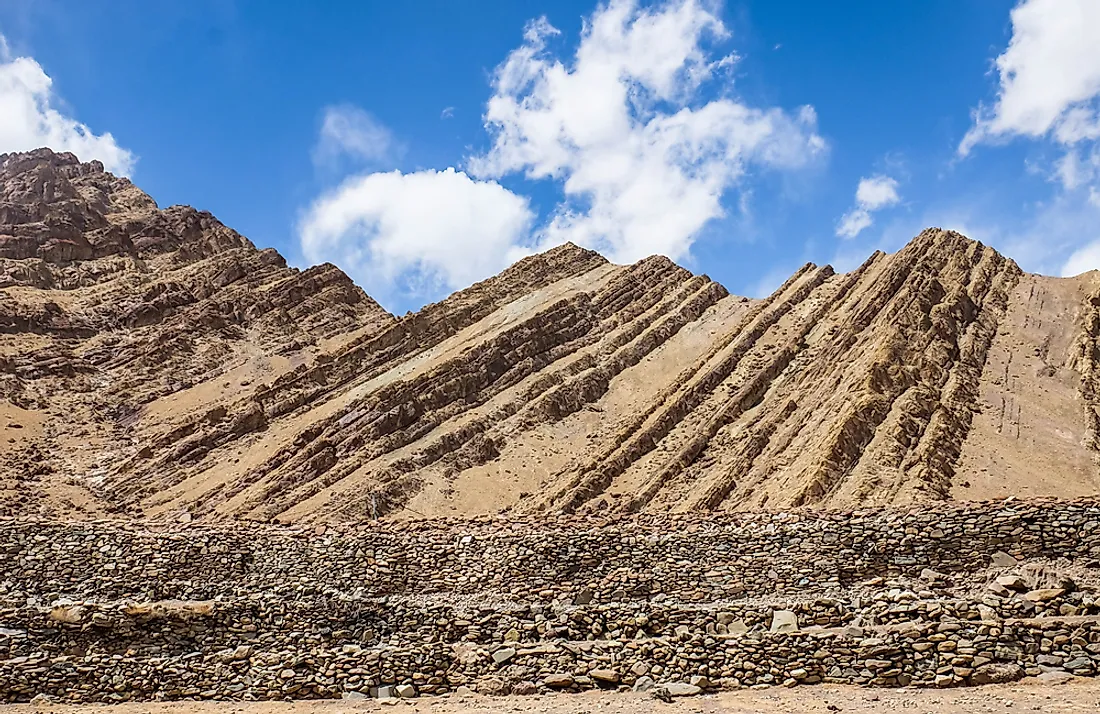What Is A Fold Mountain?

- Compression of tectonic plates cause the fold mountains
- Fold mountains length greatly exceeds the width.
- Himalayas are a fold mountain
Fold Mountains are formed as a result of the compression of tectonic plates, which leads to the formation of large fold-like structures on the earth’s crust. Fold Mountains primarily exist as mountain ranges, and the majority of the earth’s well-known mountain ranges are examples of Fold Mountains.
Characteristics Of Fold Mountains
One common characteristic seen in all fold mountains is their formation. Fold Mountains are all formed through the collision of different tectonic plates along a convergent boundary creating distortions on the earth’s crust. Fold Mountains are also characterized by their arcuate shape whereby the mountains’ length greatly exceeds the width. The process of the formation of Fold Mountains involves the exertion of considerable pressure on layers of rock which causes the rocks to metamorphose. Another characteristic of Fold Mountains is based on their location as these mountains are predominantly situated along the margins of continents with the margins being close to oceans. All fold mountains also feature the shape on an arc where one slope is concave shaped while the other slope being convex shaped.
Formation Of Fold Mountains
Fold mountains are formed after two continental tectonic plates move towards each other and collide at the destructive plate boundary (also known as the convergent boundary) leading to the development of mountain ranges. The enormous amount of pressure exerted by the rocks distorts the earth’s crust forming folds like those on a piece of cloth but on a massive scale. The folding effect is more profound in regions where the crust has a weak layer such as that made up of salt.
Types Of Fold Mountains
There are several thresholds used to distinguish different types of Fold Mountains. One such threshold is age whereby fold mountains are classified into young fold mountains (aged between 10 and 15 million years) and old fold mountains (aged 200 million years and above). Another basis on which Fold Mountains are distinguished is the geography of the mountains so that there are either simple fold mountains or complex fold mountains. In simple fold mountains, the synclines and anticlines are well developed creating a wave-like appearance to the mountains while in complex fold mountains, the compression forces cause the formation of a very complex structure known as the nappe.
Examples Of Fold Mountains
Fold Mountains are found all over the world with most of the world’s tallest peaks being fold mountains. The most famous mountain range in the world, the Himalayas in Asia, is an example of fold mountains. The mountain ranges which are made up of numerous peaks rise over 23,000 feet above sea level, which include the world’s tallest mountain of Mount Everest. The Himalayas were formed by the collision of the Eurasian tectonic plate and the Indian tectonic plate millions of years ago. The Himalayas are young fold mountains when viewed in a geological time frame as they are less than 15 million years old. Another example of Fold Mountains is the Andes Mountains in South America. The Andes is a mountain range which stretches about 4,300 miles in length and has a maximum width of 430 miles. The significant difference between the Andes’ length and width is an essential characteristic seen in all fold mountains. The Andes was formed as a result of tectonic forces which acted between the South American tectonic plate, the Nazca tectonic plate and the Antarctic tectonic plate.











